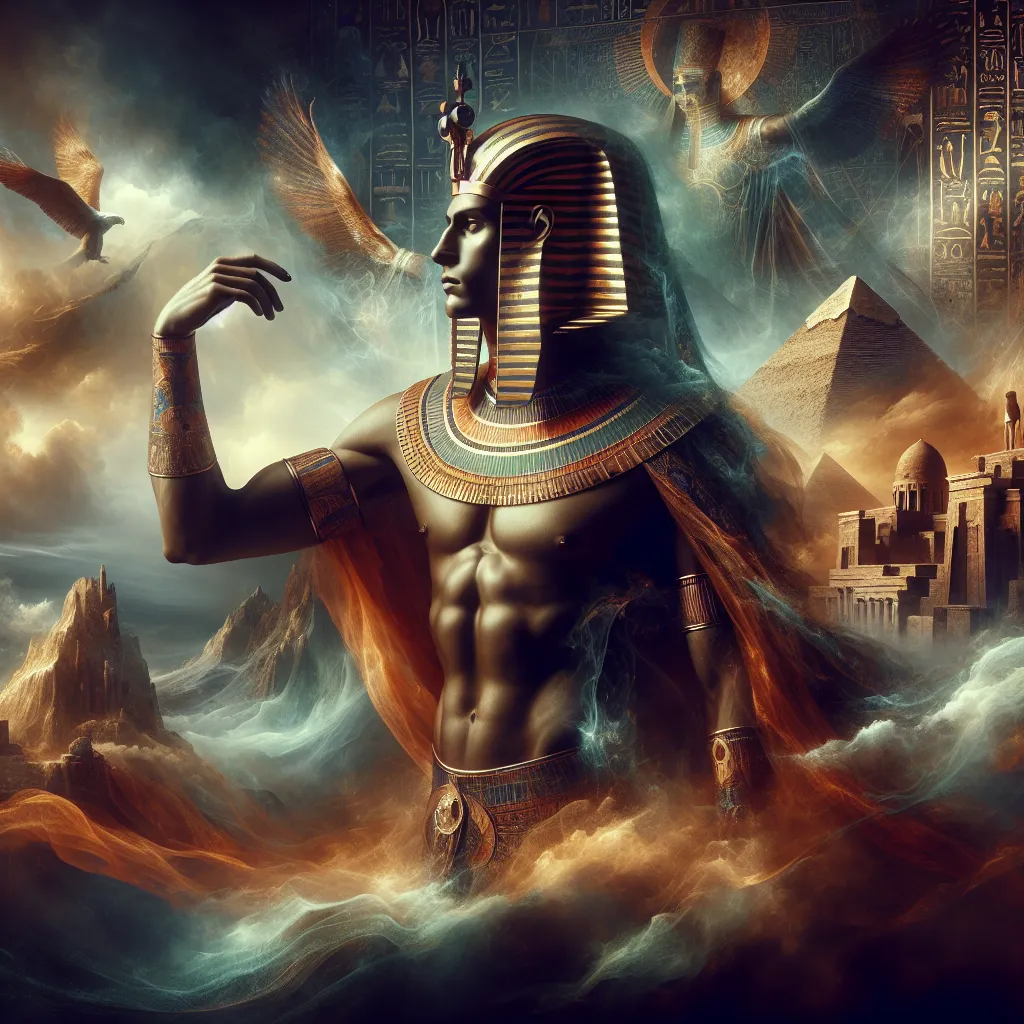
- Published on
- Authors

- Name
- You
Introduction
In the timeless sands of Ancient Egypt, where pyramids etched tales into the sky and the Nile whispered secrets to the wind, a different kind of power was harnessed by the pharaohs - breathwork. This practice was not merely a physiological exercise but a profound ritual that married advanced science with mystical wisdom. Through carefully cultivated breath, pharaohs connected with the divine, ensured their sovereignty, and maintained harmony within the kingdom.
The Significance of Breath in Ancient Egypt
Breath, or "Shu," was considered the life force that animated all living beings. The ancient Egyptians believed that mastering the breath was synonymous with mastering life itself. For the pharaohs, this mastery was essential for asserting their divinity and right to rule.
Divine Connection
- Invocation of Gods:
- Breath was central in rituals that called upon Gods such as Osiris, Ra, and Anubis.
- The controlled breath was believed to open a channel to the divine, allowing pharaohs to commune with higher powers.
- Breath of Maat:
- Maat represented truth and cosmic order.
- Pharaohs practiced specific breathing techniques to ensure they ruled in accordance with Maat, thus maintaining balance and justice.
Rituals of Kingship
Breathing techniques were woven into the fabric of royal ceremonies and daily practices. Here are some notable examples:
| Ritual | Breathing Technique | Purpose |
|---|---|---|
| Coronation | Deep diaphragm breathing | Symbolized taking in divine energy |
| Daily Prayers | Rhythmic breathing | Maintained a connection with the divine |
| Festivals | Alternating nostril breathing | Balanced energies and invoked blessings |
Advanced Science Behind the Mystical Practices
While undeniably mystical in nature, the breathwork practices of the Ancient Egyptians were also grounded in what we now recognize as advanced scientific principles.
Oxygenation and Health
- Enhanced oxygenation: Deep diaphragmatic breathing increases oxygen intake, which boosts energy levels - crucial for pharaohs often engaged in physically and mentally demanding rituals.
- Stress reduction: Rhythmic breathing stimulates the parasympathetic nervous system, reducing stress, which was vital for maintaining the composed demeanor expected of a ruler.
Neuroplasticity
- Cognitive enhancement: Regular breath control exercises improve concentration and cognitive function. This was paramount for pharaohs who needed to make wise decisions swiftly.
Energy Regulation
- Pranayama parallels: Similar to practices in ancient Indian traditions, Egyptian breathwork included techniques that regulated prana or chi. This balanced the body's energy centers (shakti**).
Conclusion
The breathwork practices of the pharaohs are a testament to the harmonious blend of advanced science and mystical wisdom in Ancient Egypt. These practices provided the physical vigor, mental clarity, and divine connection necessary for pharaohs to rule with authority and grace. As we uncover and understand more about these ancient techniques, they continue to offer valuable insights into the interplay between the human body, mind, and the mystical realms.
For modern practitioners, emulating these breathwork rituals can be a profound way to connect with a legacy of power, wisdom, and divine harmony passed down through millennia. Embrace the breath of the pharaohs, and you may find yourself tapping into the timeless currents of kingship and power.
By merging meticulous research and captivating narrative, our exploration into the Breath of the Pharaohs reveals not only the legacy of ancient rulers but also the enduring power of breath as a bridge between humanity and the divine.
